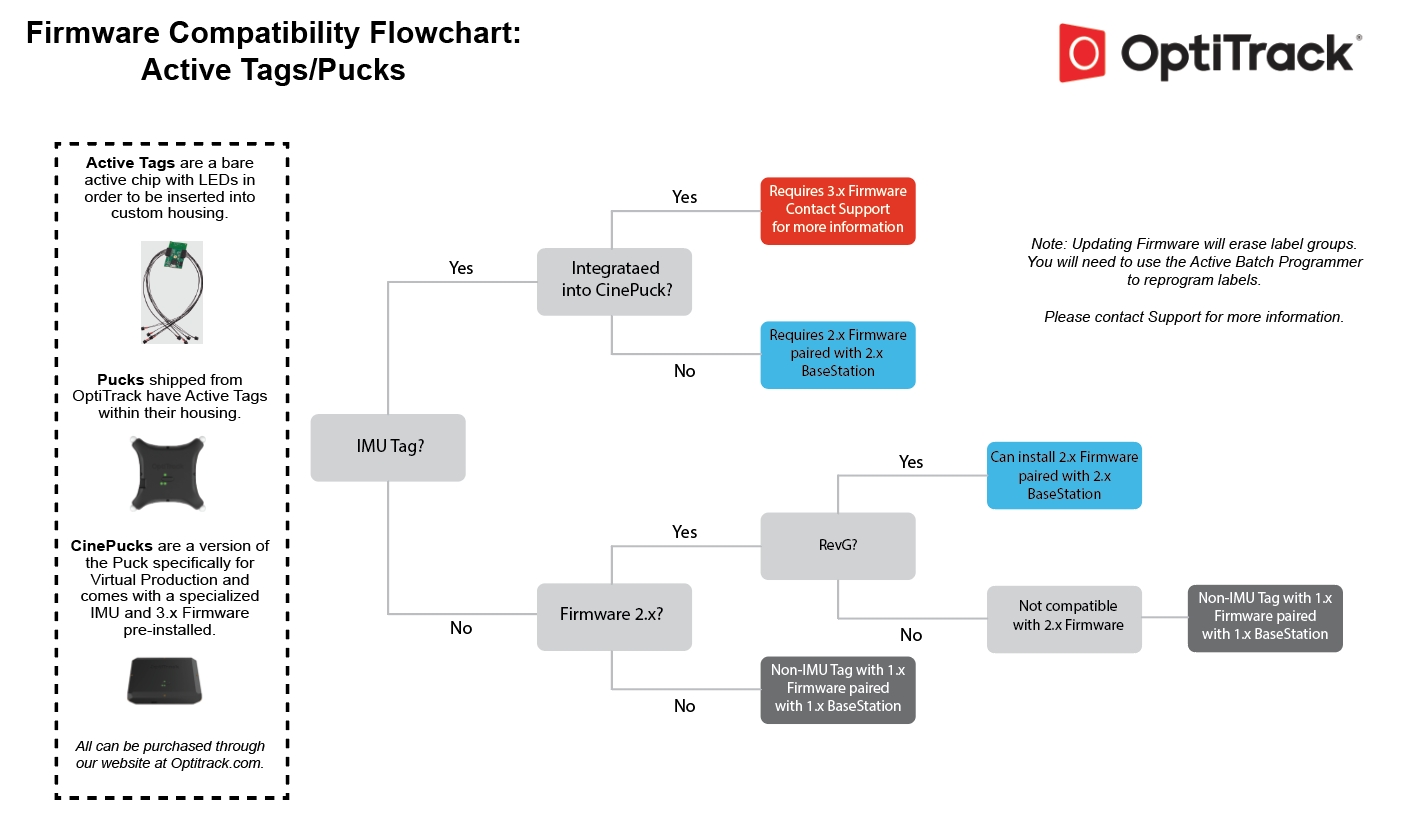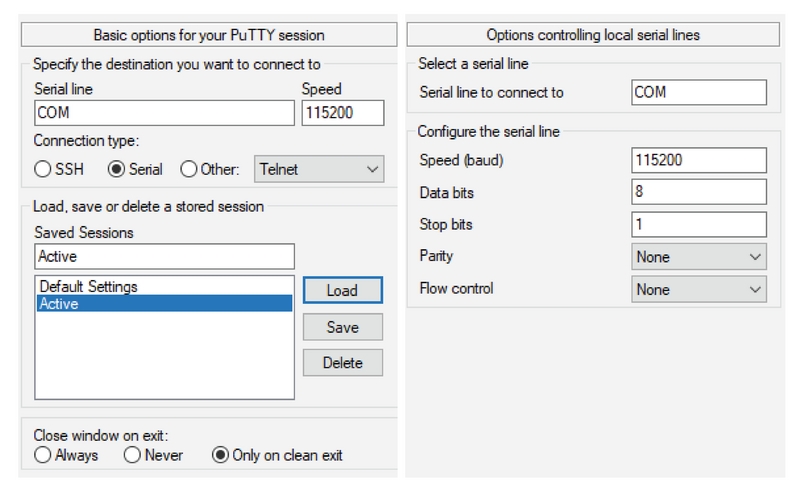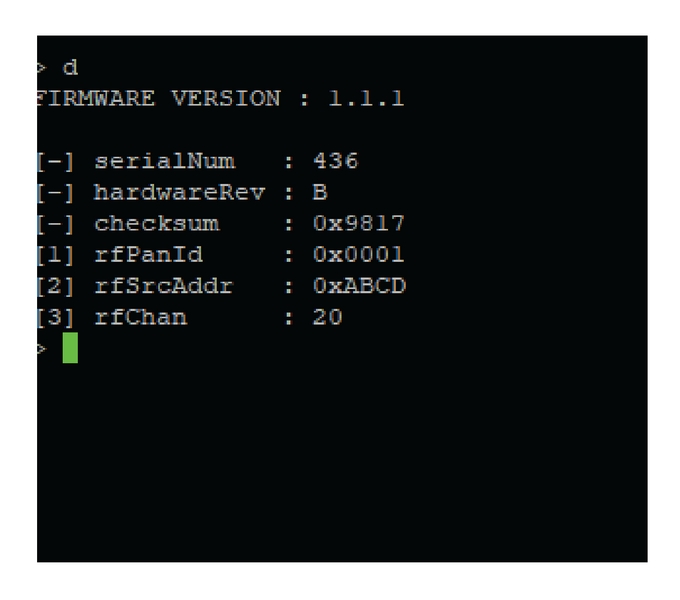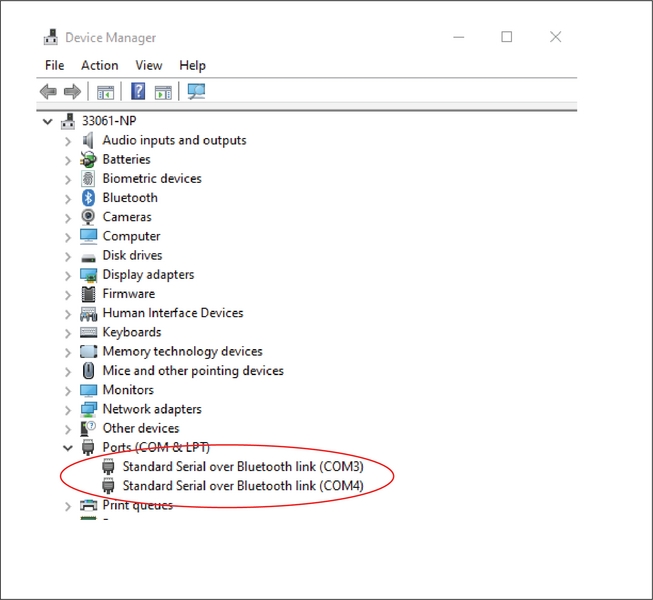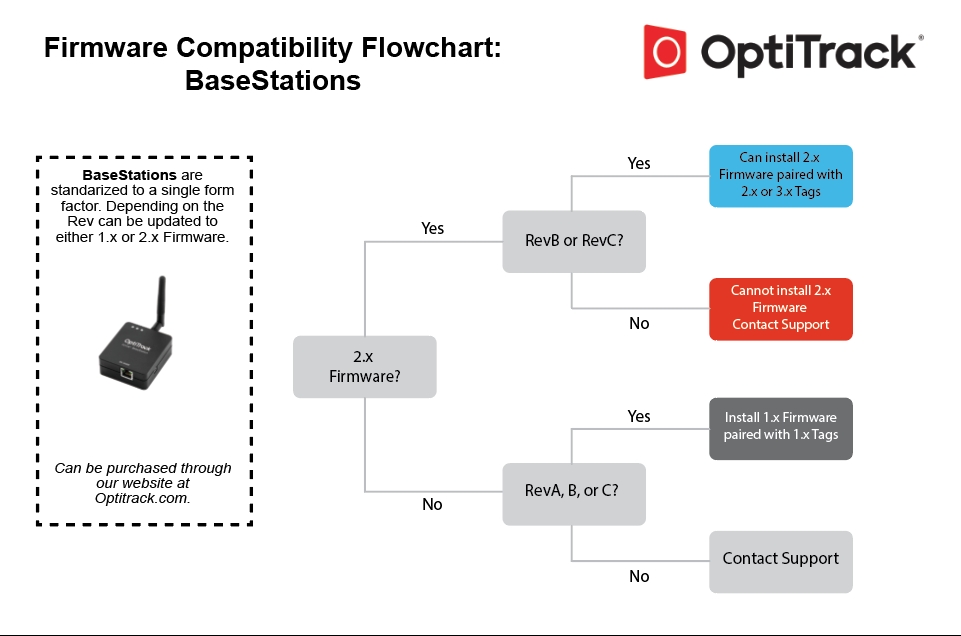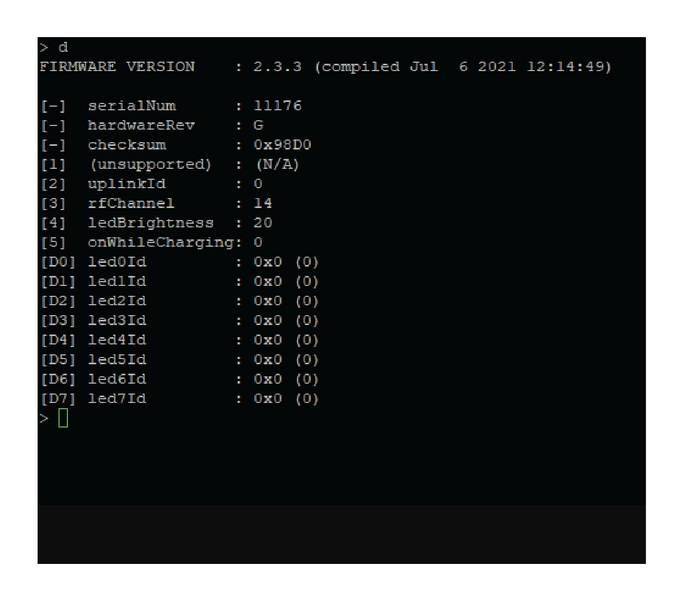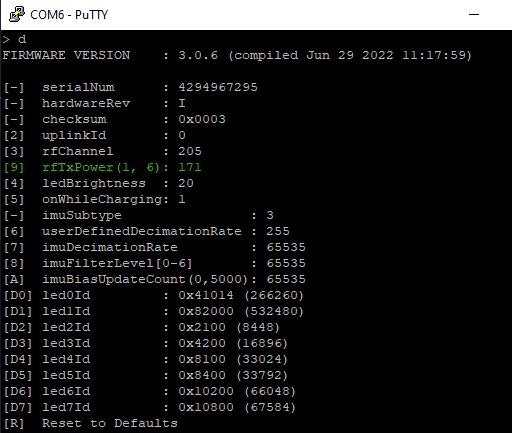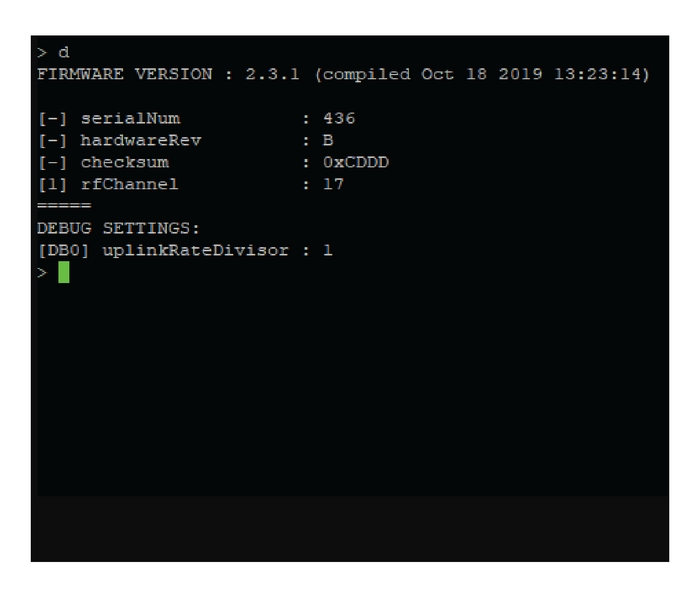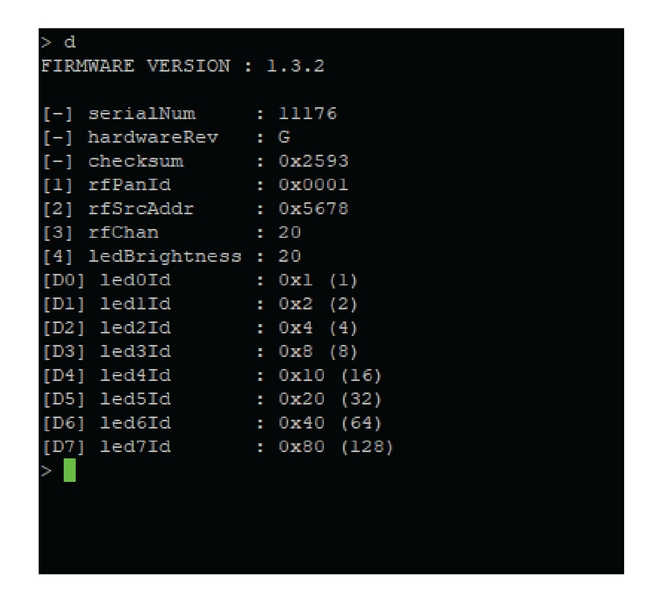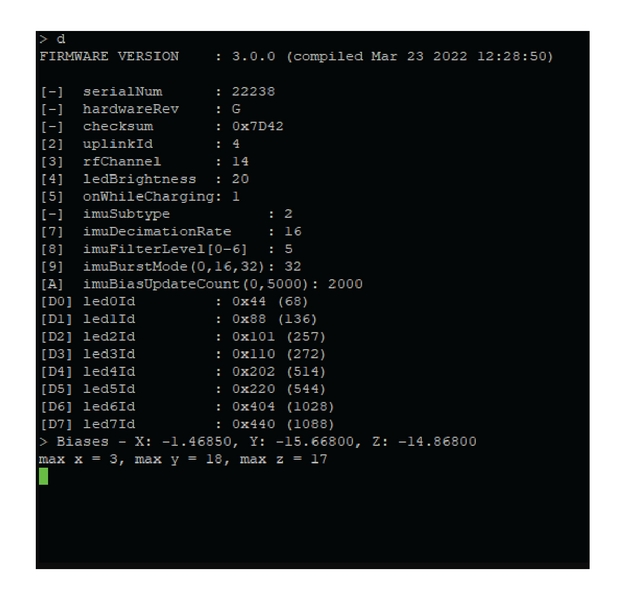
This page provides instructions to use Active Batch Programmer to configure active components.
Active Batch Programmer provides a convenient way of programming multiple OptiTrack components including Active Tags, CinePucks, Pucks, and BaseStations.
In general, users should not need to use the batch programmer. Tags and Pucks are pre-configured for every set of devices that ships in the same order, and we ensure none of the Labels overlap.
The cases when you would need to reconfigure the active components are:
When you have purchased new Tags/Pucks to add to a system from a previous order.
When there is a need to change the RF communication channel to avoid interference.
When needed, multiple BaseStations can be connected to the same camera network, as long as they communicate through separate channels.
Please see the Active Components Hardware section for more details and specifications for Active Devices.
Windows 10 or 11
BaseStation: Mini USB Data Cable
Active Tag/Puck: Micro USB Data Cable
CinePuck: USB C Data Cable
To use IMU components, all of the devices, including the BaseStation, must have firmware version 2.x or above installed. To determine the version installed, attach each device in Read-Only Mode to display its current properties, including the firmware version.
If the installed firmware is an older version, please contact us for assistance with upgrading the firmware.
CinePucks on firmware version 3.x may require assistance from Support to configure.
Download the Active Batch Programmer installer from the Developer Tools section of the OptiTrack Downloads page.
Double-click to run the installer.
Review the End User License Agreement, check the box to agree to the license terms and conditions, then click Install.
The installer will copy a shortcut for the Active Batch Programmer to the Windows desktop.
Open Active Batch Programmer without any components connected.
Active Batch Programmer opens in Read-Only Mode by default. Once Read-Only Mode is turned off, the current settings are applied when a new device is attached, then powered on.
Stay in Read-Only Mode to view the active device's current configuration. Unchecking Read-Only Mode will apply the settings currently selected in the Active Batch Programmer when a device is connected.
For this reason, we recommend you always configure the settings you wish to apply first, before connecting any devices or turning off Read-Only Mode.
A batch of active components contains one BaseStation and the active components that connect to it. These components can be devices such as Pucks and CinePucks or sets of Active Tags.
Active Batch Programmer assigns a unique active label to each marker in the batch through labeling groups. A labeling group is a set of unique active marker labels that are programmed to the active IR LEDs on the device.
Applicable to Active Tags/Pucks only, Set Marker Labels is selected by default.
Marker labels are the active IDs assigned to individual markers, applied to all the markers on a single device or set of active tags as a group. The label group will increment as each new device is attached.
If needed, individual markers can be turned off on a device using the Disable Markers setting.
Always on Mode sets all the markers on the programmed device to 0. This causes the markers to strobe in sync with the exposure of the cameras, without an active pattern, making them appear like passive markers.
It's important there are no overlapping labels assigned within the same batch.
When reconfiguring marker labels, program ALL of the Tags and Pucks in the same session, so that labels do not overlap with other components in the system.
Select Set Radio to update the Radio Frequency (RF) Channel. The available RF range is 11-26. All devices in a single batch (BaseStation, Pucks, and/or Active Tags) must use the same RF channel.
Enter the RF Channel you wish to use. If programming a new device to attach to an existing BaseStation, make sure to assign the same RF channel used by the BaseStation to the new device.
The Uplink ID property is applied to active devices only and is unique to each device. This number increments as each new device is programmed.
Use the Signal Intensity slider to adjust the radio gain levels, as needed to address interference in the capture volume.
The Set Radio configuration applies to BaseStations as well as Pucks and Active Tags.
Select Set LED Options to adjust the brightness of the Active IDs.
Use the Custom Brightness setting to select a value between 0 and 100. The Default is 20.
Auto Brightness sets the value to 50.
Once the settings are configured, you are ready to begin the first batch.
Uncheck Read-Only Mode (just report existing configuration).
With the device powered off, attach the BaseStation, Puck or Active Tag to the PC running Active Batch Programmer, using the following cable type:
BaseStation: Mini USB data cable
Active Tag/Puck: Micro USB data cable
CinePuck: USB C data cable
Skip updating the BaseStation if it's already set to the RF Channel you wish to use.
Power on the device and wait for Active Batch Programmer to update the Current Batch information (Active Tags, CinePucks, and Pucks only) and the Log.
Once the device is configured, disconnect it and attach the next device. Repeat until all devices in the batch are configured.
The Current Batch field displays summary information about the label groups applied to the devices in the batch. This allows the user to easily track which devices are included in the batch and ensure that duplicate label groups are not assigned.
Note that the Next Label Group value has advanced automatically.
To prevent overlapping label groups, we recommend programming all the devices for each BaseStation in a single batch.
Click Start New Batch to program additional BaseStations and devices.
Monitor the Log while connecting components to make sure configurations are applied successfully. The Log displays detailed information about the device in both read-only mode and when updates are made.
Firmware version
Existing configuration
Device serial number
Details of all the changes applied
Read-only information is displayed in gray with a [debug] tag, while changes are shown in black with the [info] tag. If needed, click in the log pane to select and copy the log to paste it into a text file.
Firmware Compatibility Chart
The charts below outline the firmware versions available for BaseStations and Active Tags/Pucks. With the exception of the CinePuck, the active devices and the BaseStation must be on the same firmware version. The CinePuck uses 3.x firmware and is compatible with BaseStations on 2.x.
For Active Tags specifically, if the device doesn't have an IMU then it's compatible with 1.x. firmware If it has the first version of an IMU, then it is compatible with 2.x. And, if it has an upgraded IMU (i.e., a CinePuck), then it is compatible with 3.x.
In most cases, you will not need to update the firmware on your Active components. The Active components you receive should work for your system without the need to update. In the event that you are advised to update your Active components, we strongly recommend doing so only under the guidance of a OptiTrack Support Engineer. Please contact support for instructions on how to update the firmware.
When you first receive your Active Tags and BaseStation they will be on firmware 1.1.0 unless otherwise setup with your Sales Engineer for very specific applications. Firmware version 1.1.0 is recommended for most applications. These will be RevG (revision G) for Active Tags and RevD for BaseStations. These should not need to be updated. Please contact support if you need assistance with your Active hardware.
If your Active hardware is older than RevG for Active Tags and RevD for BaseStations, we recommend updating to RevG and RevD respectively.
The information below is detailed information that is not intended for the average user. What you receive out of the box will work for the majority of applications based upon initial setup with a Sales Engineer.
Active components that were shipped later than September 2017 use the firmware 1.x or above.
Requires Motive 2.0 Beta 2 or later versions.
No longer requires eSync for synchronizing the BaseStation with the camera system.
Support for user-defined camera framerates.
The illumination time of active LEDs is synchronized to the camera exposure time.
Allows changing the depth of illumination patterns, allowing a higher number of active markers to be actively labeled.
Active tags with 1.x firmware and no IMU are compatible with BaseStations with 1.1.x firmware (RevA, B, C, and D BaseStations are all compatible with 1.1.x firmware)
RevA hardware version BaseStations are NOT compatible with 2.3.x firmware.
RevB, RevC, and RevD hardware version BaseStations are compatible with 2.3.x firmware.
IMU tags with 2.3.x firmware are compatible with BaseStations with 2.3.x firmware.
An IMU tag
Requires a BaseStation (RevB, RevC, RevD) with firmware 2.3.x.
Do NOT use with a BaseStation with 1.1.x firmware.
A non-IMU tag requires a BaseStation with matching firmware
IMU with 1.1.x firmware requires a BaseStation (RevA, RevB, RevC, RevD) with firmware 1.1.x.
IMU with 2.3.x firmware requires a BaseStation (RevB, RevC, RevD) with 2.3.x firmware.
Essentially, if an Active Tag has the same firmware as a BaseStation it will be compatible, with a few exceptions. For example, if you have an Active Tag with 1.x firmware and a BaseStation with 1.x firmware, they will be compatible.
CinePuck-specific firmware compatible with BaseStations with 2.3.x firmware.
Firmware Compatibility Chart
Below is a chart to see which versions are compatible with which BaseStations and Active Tags/Pucks. Essentially, it is a one-to-one correlation between Active hardware and firmware versions with some exceptions. For Active Tags specifically, it boils down to: if it doesn't have an IMU then it's compatible with 1.x. If it has the first version of an IMU, then it is compatible with 2.x. And, if it has an upgraded IMU, then it is compatible with 3.x.
BaseStation
BaseStation_v1.1.0_REVB
BaseStation_2.3.4
Non-IMU Tag
TAG_v1.3.2_REVG
Tag_2.3.4_nonIMU
IMU Tag
Not Compatible
Tag_2.3.3_IMU
CinePuck
Not Compatible
CinePuck_3.2.0
These versions are outdated and no longer supported.
Active components that were shipped prior to September 2017 uses the firmware v0.8.
v0.8 BaseStation works only with v0.8 Tags.
Firmware v0.8 requires an eSync to synchronize the BaseStation and the mocap system together.
Whenever v0.8 BaseStation is power cycled, all of the v0.8 Tags must be power cycled as well.
v0.8 BaseStation is not compatible with v1.0 Tags
v0.8 Tags needs to be power cycled each time you close and relaunch Motive.
v0.8 Tags needs to be power cycled each time system frame rate has been changed in Motive.
We strongly recommend you use our Active Batch Programmer instead of PuTTY. Instructions on how to use the Active Batch Programmer can be found here: Using Active Batch Programmer. Our Active Batch Programmer automates many of the settings found below and therefore is safer and more convenient for use.
This guide is intended for advanced users or those under the guidance of the OptiTrack Support Team. Your OptiTrack Active hardware should arrive fully configured and ready for immediate use. In most cases, you should not need to modify its configuration. If configured incorrectly, tracking may perform poorly, or may cease to function entirely. Do not attempt to modify the configurations of your OptiTrack Active hardware unless you have been instructed on how to do so by an OptiTrack Support Engineer.
The BaseStation and Active Tag can both be connected to a computer via USB, and expose a virtual serial port. You can connect to this serial port using a terminal application in order to view and modify the configuration of the devices.
A popular choice of terminal application for Windows is the freely available PuTTY, which the latest version can be downloaded here and will be used in this guide.
Note that the UI of PuTTY may look slightly different for each version, however, all of the relevant settings will be present.
After a successful download of PuTTY, we'll want to create a saved session that we can use every time we boot up PuTTY for our Active hardware configurations.
Instructions
Start PuTTY.
Choose the Serial option under the "Connection Type" section.
Enter 115200 into the Speed field.
Under Saved Sessions enter an appropriate name like "Active" or "Tag Settings".
After everything is entered correctly click the Save button. This will populate your saved name below Default Settings.
The next time you boot up PuTTY you can select the saved session and click Load to load the settings we set up above. You can access more detail information about the serial connection by clicking the Connection > Serial option in the Category section on the left.
When connecting to an OptiTrack Active device you'll need to input the correct COM# port into the "Serial Line" section.
When you're ready to start programming your Active tags you need to verify their class-compliant virtual serial port to enter into the Serial line in PuTTY. To do this you'll need navigate to the Device Manger for any Windows machine.
From the Device Manger window you can click the dropdown arrow for Ports. This will show a list of all the COM ports that are plugged into your machine.
The easiest way to find out which COM number is associated with your Active Tag is to plug in the Active Tag and see which new COM port appears.
Once you have this number (ie. COM3, COM4, etc.), you can navigate back to PuTTY to enter this port into the Serial line text field.
Now that we have all the settings we need to properly interface with Active Tags and BaseStations, we can open a PuTTY session.
To do this we simply load the settings configured above and then click Open.
This will open a command terminal where we can implement commands to configure both the Active Tags and BaseStations.
There are three serial commands that we'll be concerned about for this application: d, s, and v.
This command takes no parameters, and outputs a listing of all configuration options and their current values. Each configuration option is listed on its own line, starting with its ID (surrounded by square brackets), followed by its name, and finally its current value.
The ID is used to refer to the options when modifying their values (described below); if the ID is displayed as a dash, this means the value cannot be changed.
If the value begins with the prefix “0x”, this means the value is displayed in hexadecimal (base 16); otherwise, the value is a regular decimal (base 10) number.
This command takes two parameters (separated by spaces), and is used to modify the value of a configuration option.
The first parameter, as described above, is the ID of the configuration option you want to modify.
The second parameter is the new value to use for the specified option. The new value can be provided in either decimal or hexadecimal; if hexadecimal, the value should be prefixed with “0x”.
As an example, the command s 1 2 will set the option with ID 1 to the value of 2. Similarly, the command s 1 0xF will set the option with ID 1 to the value of 0xF (hexadecimal), or 15 (decimal).
This command takes no parameters, and writes the current configuration to the flash memory of the device. This should always be performed before closing a PuTTY session if you wish to save the configuration.
The v command is required to preserve any changes you’ve made to the configuration since the last time you saved. If you do not issue the save command, your configuration changes will be lost the next time the device is powered off.
Some of the options in PuTTY change depending on the firmware version you use with Active hardware. These options are for Firmware Version 1.x.
When configuring a BaseStation there are only a couple of options we would need to worry about for most setups. It's good practice to first configure a BaseStation and then program Active Tags around the BaseStation's settings.
BaseStation Commands
[1]: rfPanId
Default: 0x0001
This is the 16-bit PAN (personal area network) identifier used for wireless communication.
The PAN ID is used to filter traffic at the hardware level, and different PANs may be used to partition a single wireless channel into multiple separate logical networks. This may, for example, be useful if you needed to use two separate OptiTrack Active systems in close proximity. However, in general, the use of different wireless channels (see option [3]: rfChan below) should be preferred, rather than using multiple PANs on same wireless channel.
The PAN ID and channel values configured on the BaseStation must match the values configured for every Tag that is intended to be used with that BaseStation.
[2]: rfSrcAddr
Default: 0xABCD
This is the 16-bit wireless address of the BaseStation. You should not need to change this.
[3]: rfChan
Default: 20
This is the radio channel used for wireless communication. The range of valid channels is 11-26. The frequency in MHz for the channel ch is given by 2405 + 5 · (ch - 11).
You may wish to change the radio channel if you have determined that you’re encountering poor RF performance due to external interference, or if you want to operate multiple OptiTrack Active systems in close proximity.
The PAN ID and channel values configured on the BaseStation must match the values configured for every Active Tag that is intended to be used with that BaseStation.
When configuring Active Tags, you'll want to match the rfPanId and rfChan to the BaseStation. If these do not match then the Active Tags will not properly synchronize to your OptiTrack system.
Active Tag Commands
[1] rfPanId
Default: 0x0001
Refer to the description in the section above: Firmware Version 1.x > BaseStation Commands > rfPanID.
The PAN ID and channel values configured on the BaseStation must match the values configured for every Tag that is intended to be used with that BaseStation.
[2] rfSrcAddr
Default: 0x5678
This is the 16-bit wireless address of the Tag. You should not need to change this.
[3] rfChan
Default: 20
Refer to the description in the section above: Firmware Version 1.x > BaseStation Commands > rfChan.
The PAN ID and channel values configured on the BaseStation must match the values configured for every Tag that is intended to be used with that BaseStation.
[D0] led0Id … [D7] led7Id
Default: 0x0 (0)
These settings are used to specify the active ID for each of the 8 active marker LEDs connected to the Active Tag. The default value of 0 is a special value indicating that the LED is not actively labeled and behaves as though it were a passive marker (with its LED on time synchronized with the exposure of the cameras).
The LED IDs are preprogrammed when they are sent out. The Active Batch Programmer is the best way to change these settings. Only use this setting under the guidance of an OptiTrack Support Engineer.
BaseStation Commands
[1]: rfChannel
Default: 20
This is the radio channel used for wireless communication. The range of valid channels is 11-26. The frequency in MHz for the channel ch is given by 2405 + 5 · (ch - 11).
You may wish to change the radio channel if you have determined that you’re encountering poor RF performance due to external interference, or if you want to operate multiple OptiTrack Active systems in close proximity.
When configuring Active Tags, you'll want to match the rfChannel to the BaseStation. If the two devices do not match then the Active Tags will not properly synchronize to your OptiTrack system.
Active Tag Commands
[2]: uplinkId
Default: 0
The uplinkId identifies the Active Tag label class that the Tag belongs to. This allows for Active Tags to be uniquely identified when there are multiple Active Tags with the same form factor in the same volume.
[3] rfChan
Default: 20
Refer to the description in the section above: Firmware Version 2.x > BaseStation Commands > rfChannel.
[4] ledBrightness
Default: 20
You can choose to increase or decrease the LED brightness on each Active Tags active markers collectively. This will control the brightness of all of the LEDs together as a unit incase the cameras are having difficulty tracking. However, it is recommended to change physical characteristics of the cameras (ie. aperture), or of the volume (ie. blocking out excess light), or increase the exposure of the cameras in Motive prior to altering this setting.
[5] onWhileCharging
Default: 1
This setting allows for a powered Active Tag to remain on when plugged into power. It is useful in setups where the Active Tag is mounted to an object that can supply power, thus ensuring the Active Tag will not turn off or run out of battery.
1 denotes that a powered Active Tag remains on when plugged into power, 0 denotes that when a powered Active Tag is plugged into power, it will shut off while charging.
[D0] led0Id … [D7] led7Id
Default: 0x0 (0)
These settings are used to specify the active ID for each of the 8 active marker LEDs connected to the Active Tag. The default value of 0 is a special value indicating that the LED is not actively labeled and behaves as though it were a passive marker (with its LED on time synchronized with the exposure of the cameras).
The LED IDs are preprogrammed when they are sent out. The Active Batch Programmer is the best way to change these settings. Only use this setting under the guidance of an OptiTrack Support Engineer.
Currently, there is not a 3.x firmware version for BaseStations. Please refer to 2.x instructions above.
When configuring Active Tags, you'll want to match the rfPanId and rfChan to the BaseStation. If these do not match then the active tags will not properly synchronize to your OptiTrack system.
Active Tag Commands
[2]: uplinkId
Default: 0
The uplinkId identifies the Active Tag label class that the Tag belongs to. This allows for Active Tags to be uniquely identified when there are multiple Active Tags with the same form factor in the same volume.
[3] rfChan
Default: 20
Refer to the description in the section above: Firmware Version 1x > BaseStation Commands > rfChan.
[4] ledBrightness
Default: 20
You can choose to increase or decrease the LED brightness on each Active Tags active markers collectively. This will control the brightness of all of the LEDs together as a unit incase the cameras are having difficulty tracking. However, it is recommended to change physical characteristics of the cameras (ie. aperture), or of the volume (ie. blocking out excess light), or increase the exposure of the cameras in Motive prior to altering this setting.
[5] onWhileCharging
Default: 1
This setting allows for a powered Active Tag to remain on when plugged into power. It is useful in setups where the Active Tag is mounted to an object that can supply power, thus ensuring the Active Tag will not turn off or run out of battery.
1 denotes that a powered Active Tag remains on when plugged into power, 0 denotes that when a powered Active Tag is plugged into power, it will shut off while charging.
[7] imuDecimationsRate
The ADIS16505 sample rate is 2000 Hz. The decimation, dec, can is used to smooth and decrease the effective sample rate using averages. Applying the decimation rate dec yields a nominal sample rate of 2000/(dec + 1).
You should not have to change this setting.
[8] imuFilterLevel [0-6]
Default: 5
This controls the level of filtering and smoothing. 0 means no filtering, 6 means maximum filtering. We recommend level 5 as the best option.
[9] imuBurstMode
Default: 32
This setting should not be changed as this version of the firmware only supports 32-bits mode when filtering.
[A] imuBiasUpdateCount
Default: 1000
Controls the number of IMU samples between IMU bias updates. If this value is N a bias update procedure will be initiated after every N samples.
[D0] led0Id … [D7] led7Id
Default: 0x0 (0)
These settings are used to specify the active ID for each of the 8 active marker LEDs connected to the Active Tag. The default value of 0 is a special value indicating that the LED is not actively labeled and behaves as though it were a passive marker (with its LED on time synchronized with the exposure of the cameras).
The LED IDs are preprogrammed when they are sent out. The Active Batch Programmer is the best way to change these settings. Only use this setting under the guidance of an OptiTrack Support Engineer.
Beginning with firmware version 3.0.6, there is an additional setting that changes the radio frequency power intensity.
This setting applies to both BaseStations and Active Tags/Pucks. Below is a chart of the power that corresponds to the 1-6 range.
6
17 dBm
5
16 dBm
4
14 dBm
3
11 dBm
2
-1 dBm
1
-8 dBm










